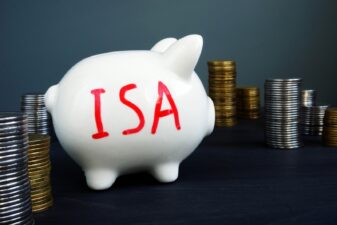As I write late on Friday afternoon, it’s been yet another brutal week for global stock markets. After five weeks of falls, the S&P 500 index came within 0.1% of a full-blown stock market crash.
A whisker away from a US stock market crash
On Thursday, the main US stock index fell as low as 3,858.87 points, almost a fifth (-19.9%) down from its 3 January record high of 4,818.62 points. But the index then pulled back from the brink, avoiding the 20% drop that begins a full-on stock market crash.
For me, a 19.9% decline is so close to 20% that I’m calling a US stock market crash on Thursday afternoon. What’s 0.1%, right? But stock prices have since rebounded, pulling the market back from the brink. As I write, the S&P 500 has leapt back above the 4,000 level to trade at 4,005.26 points. That’s 146.39 points (3.8%) above yesterday’s intra-day low.
Should you invest £1,000 in Just Eat Takeaway.com right now?
When investing expert Mark Rogers has a stock tip, it can pay to listen. After all, the flagship Motley Fool Share Advisor newsletter he has run for nearly a decade has provided thousands of paying members with top stock recommendations from the UK and US markets. And right now, Mark thinks there are 6 standout stocks that investors should consider buying. Want to see if Just Eat Takeaway.com made the list?
Meanwhile, the FTSE 100 stands firm
The past 12 to 18 months have been a great time to be an old-school value investor like me. As formerly go-go growth stocks collapsed (highly valued US tech stocks in particular), old-fashioned value stocks have surged — or held their value, at least. As a result, there has been nothing approaching a stock market crash here in the UK. As proof, here’s how the blue-chip FTSE 100 index has performed over six different periods:
| Five days | -0.2% |
| One month | -2.4% |
| Year to date | 0.2% |
| Six months | 0.7% |
| One year | 6.3% |
| Five years | -0.9% |
Looking at the above table, I see no signs of a stock market crash. To me, it seems that UK shares have been steady — though unexciting — during 2022. Furthermore, the Footsie is actually 6.3% ahead over the past year, excluding dividends. Adding in cash dividends of nearly 4% takes the index’s total yearly return to around 10%. This makes the FTSE 100 the best-performing major stock market index over the past 12 months. Yay!
The FTSE 100 still looks cheap to me
Since 31 December 2021, the S&P 500 index has lost close to a sixth (-15.7%) of its value, wiping out trillions of dollars of wealth. For me, this fall was well overdue, given how high stock valuations climbed during 2020/21’s trading frenzy. And with US interest rates heading upwards, I felt strongly that a stock market crash was coming this year.
Though US stocks have dived in value, I don’t see the S&P 500 as offering compelling value yet. However, I remain a big fan of the FTSE 100, which still looks too cheap to me. Likewise, I’m attracted to Footsie shares for their defensive properties — especially during this US stock market crash.
By my reckoning, the FTSE 100 trades on a price-to earnings ratio of around 11. This translates into an earnings yield of 9.1% a year. In comparison, the S&P 500 offers a trailing earnings yield of just 4.4%. Also, the Footsie’s dividend yield is around 4% a year — almost 2.7 times the 1.5% cash yield of the S&P 500. And that’s why I still favour buying cheap, high-yielding FTSE 100 shares over just about anything else!







